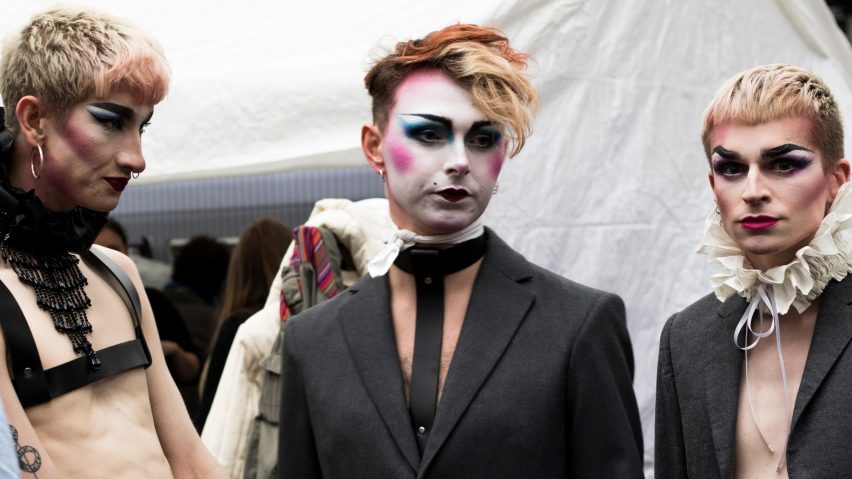
10 designers to watch from the London College of Fashion's BA Fashion show
Continuing our graduate coverage, design reporter Alice Morby picks 10 of the best collections from the London College of Fashion's BA Fashion show, including garments made entirely from antique fabrics and dresses composed of concrete and iron rods.
The London College of Fashion (LCF), part of the University of the Arts London, put on its 2017 show at the Old Spitalfields Market.
Unlike previous years, which favoured a more traditional catwalk approach, the show's format was broken into six acts – none of which showed an entire collection but rather a "story" made up of different students' work.
As with the Central Saint Martins and Royal College of Art shows, the LCF class of 2017 was inspired by the current political climate – something head of college Frances Corner noted in her statement ahead of the presentation.
"At London College of Fashion, we know that fashion shapes lives and has the power to change the way we perceive the world," said Corner. "In an era of radical change, both socially and politically, fashion has never been so relevant."
"We are dedicated to providing world-class borderless education, ensuring that the UK remains at the forefront of the creative industries as well as investing and nurturing creative talent to ensure we safeguard the fashion industry, a vital component of the UK economy, for future generations."
Here are our picks of the designers to watch from the 2017 cohort.
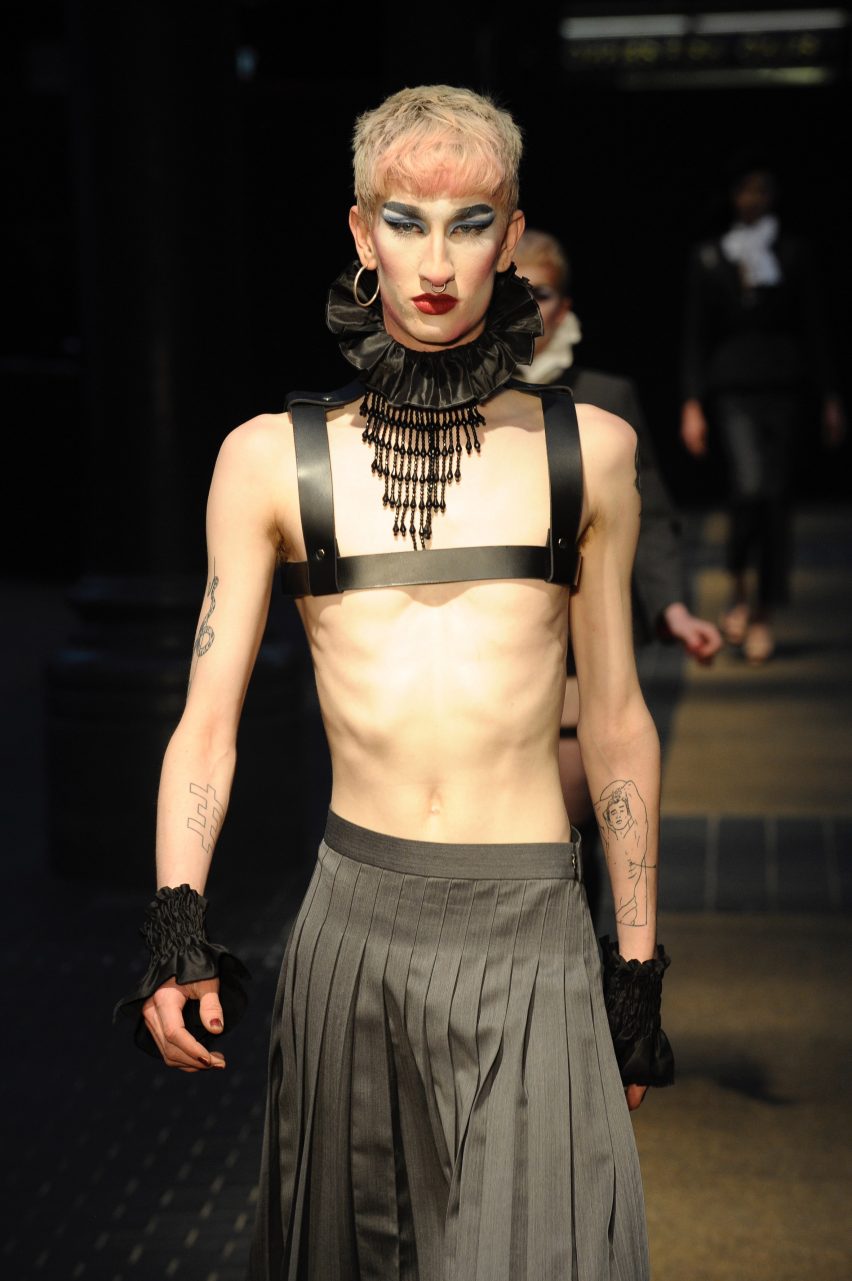
Jack Goode
Tailoring graduate Jack Goode looked to gender fluidity and the way that the body is often binarised in relation to sexuality – particularly in the tailing and luxury fashion industries.
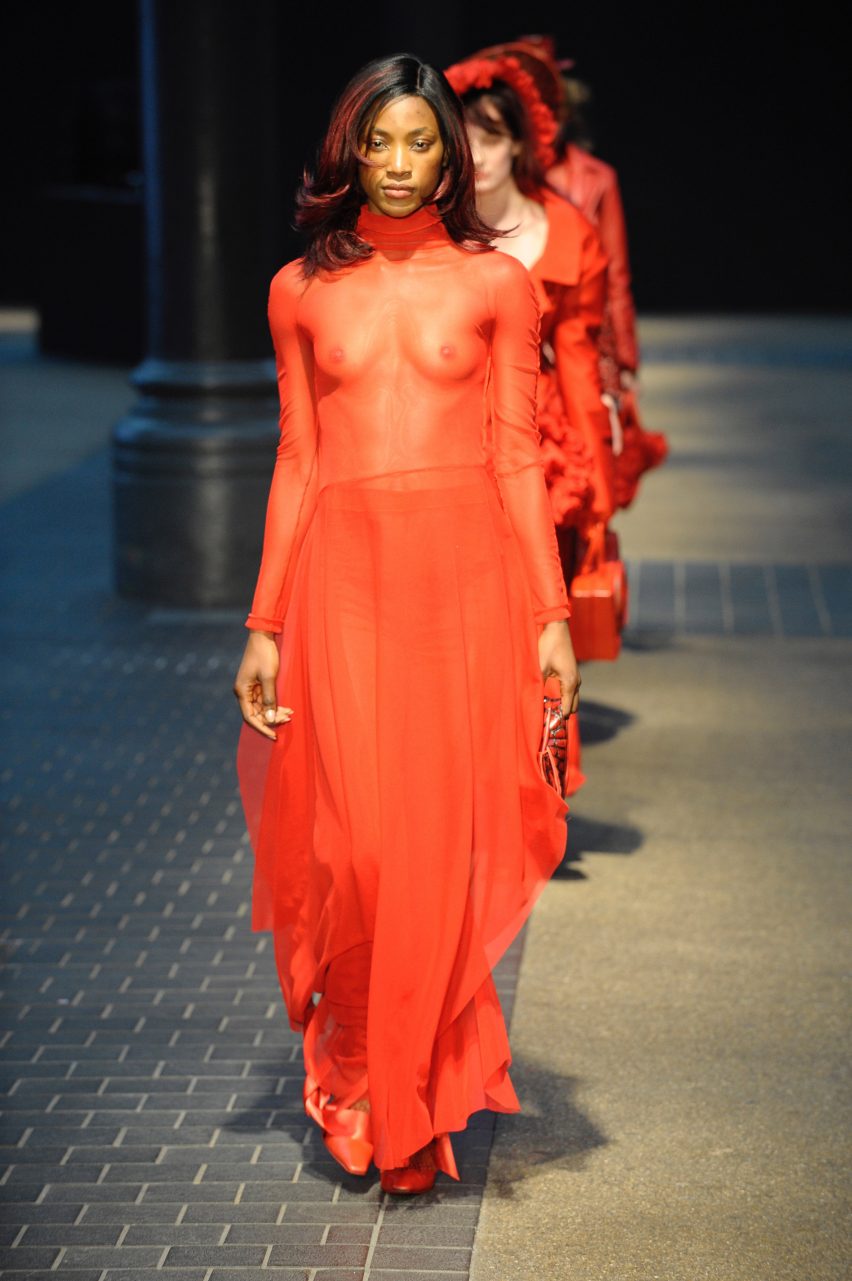
Feben Vemmenby
For her graduate collection, Feben Vemmenby looked to the ageing process of the female form – drawing upon the works of artists Nobuyoshi Araki, Louise Bourgeois, Henry Moore and Yayoi Kusama.

Ingrid Kraftchenko
Ingrid Kraftchenko's collection was heavily based around the use of leather and silicones. Hoping to subvert the male gaze, the Archetypes of Women collection was made up of a series of characters: La Matriarch, La Femme Fatale, La Riot Grrrl, La Bio Queen, La Lesbian Goddess, La Boss Bitch and La Girl Next Door.
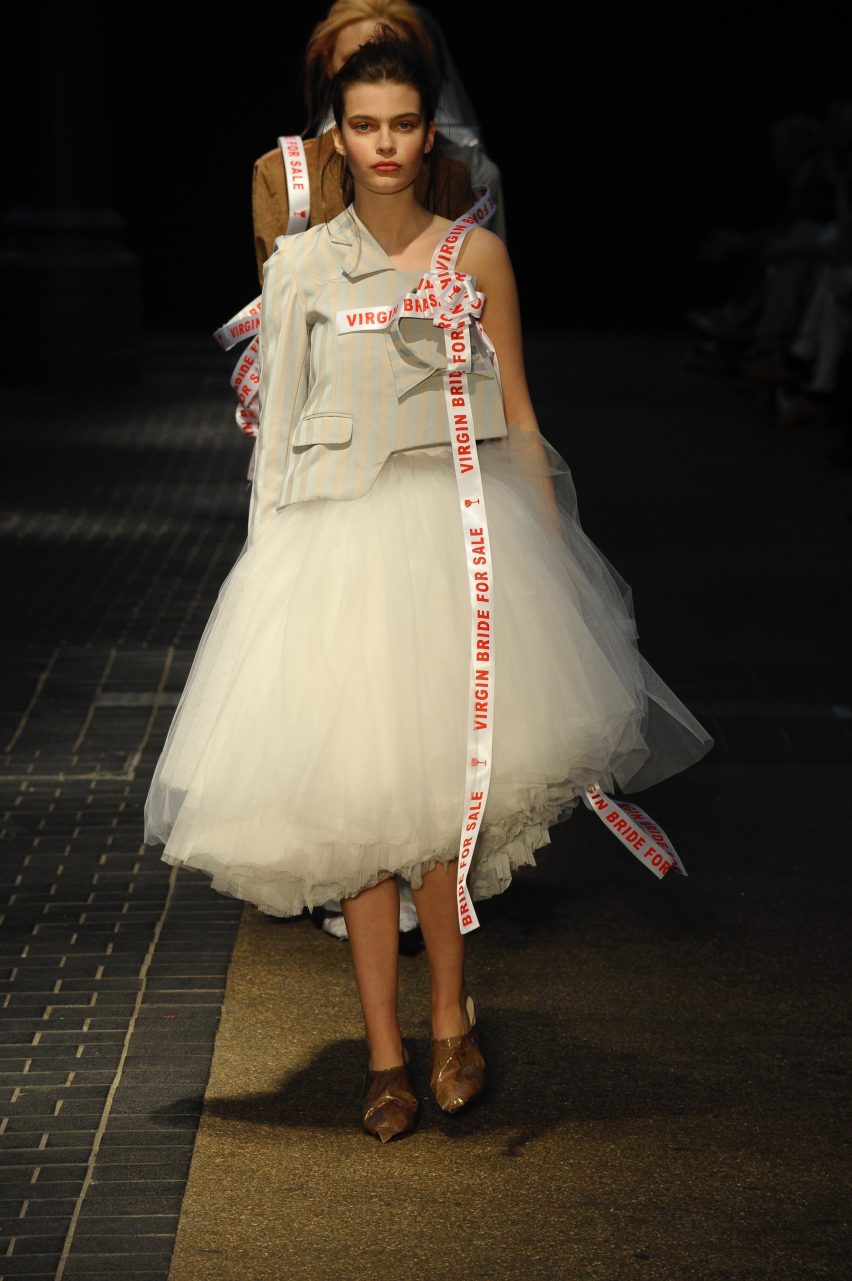
Melanie Weiai Mao
Melanie Weiai Mao's collection featured wedding garments made from appliqued tulle, and was inspired by annual so-called bride markets by Roma people that take place in Bulgaria and Romania.
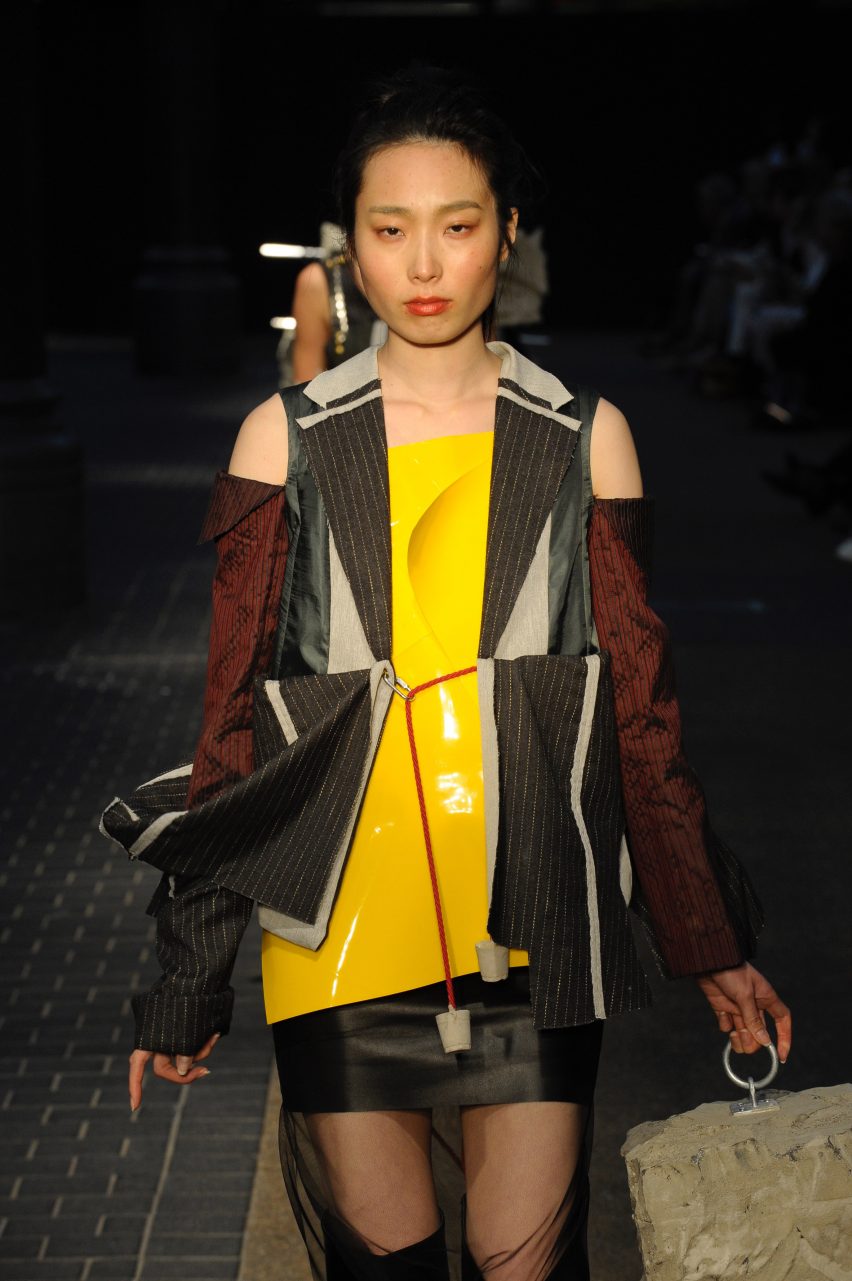
Naruhiro Iizawa
Naruhiro Iizawa, a womenswear designer, incorporated industrial materials into her final collection, which was based on buildings that are under construction or in the process of being demolished. "In London, I see construction sites cluttered with materials of concrete, plastic and metal, covered or wrapped, or exposed revealing a previous life before redevelopment," she said. "My womenswear collection reflects the interiors and exteriors of buildings and their revealing, concealing and changing natures."
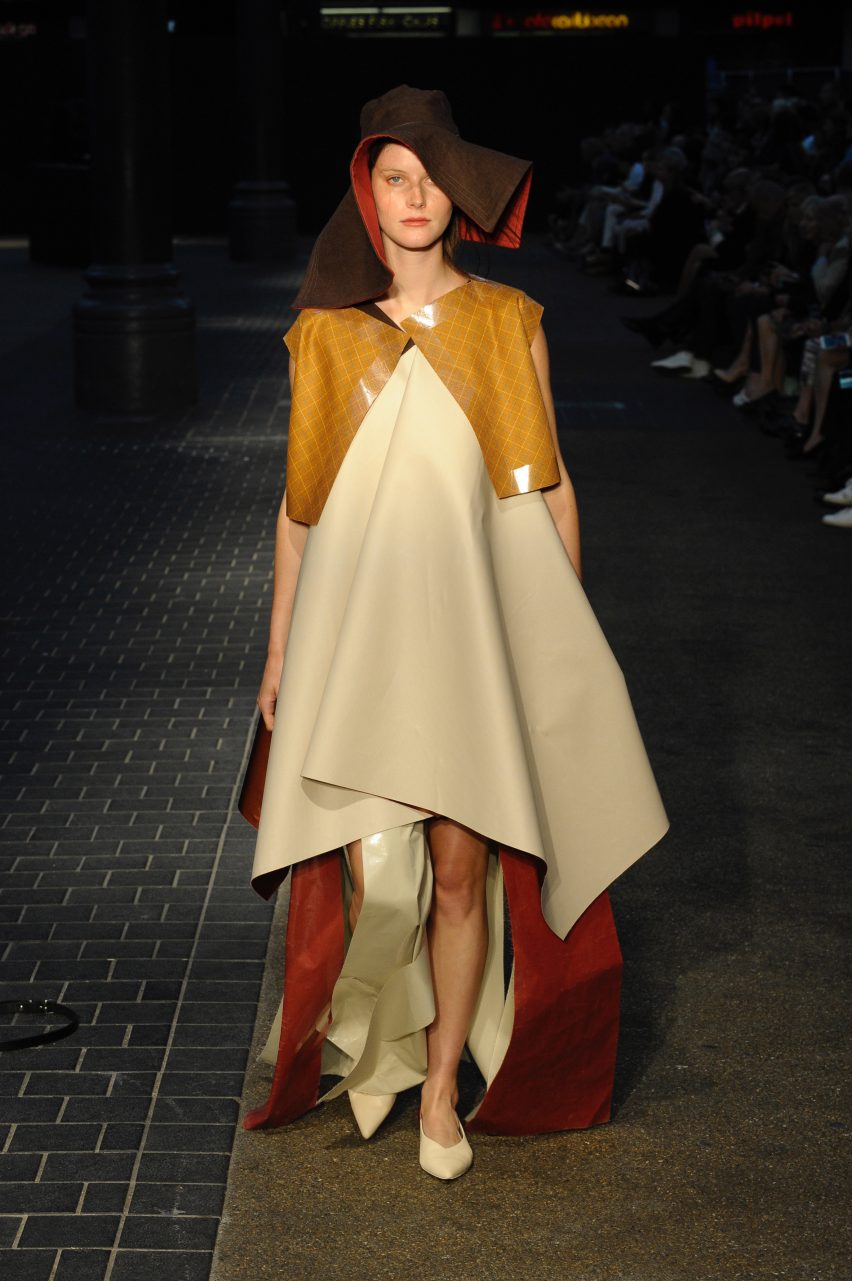
Seah Shao Fen
Seah Shao Fen was inspired by Erwin Wurm's One Minute Sculptures – a collection of works where the viewers are instructed to experience and interact with artworks instead of just looking at them. Materials used included laminated oil cloth, while edges were left square and panels remained open.
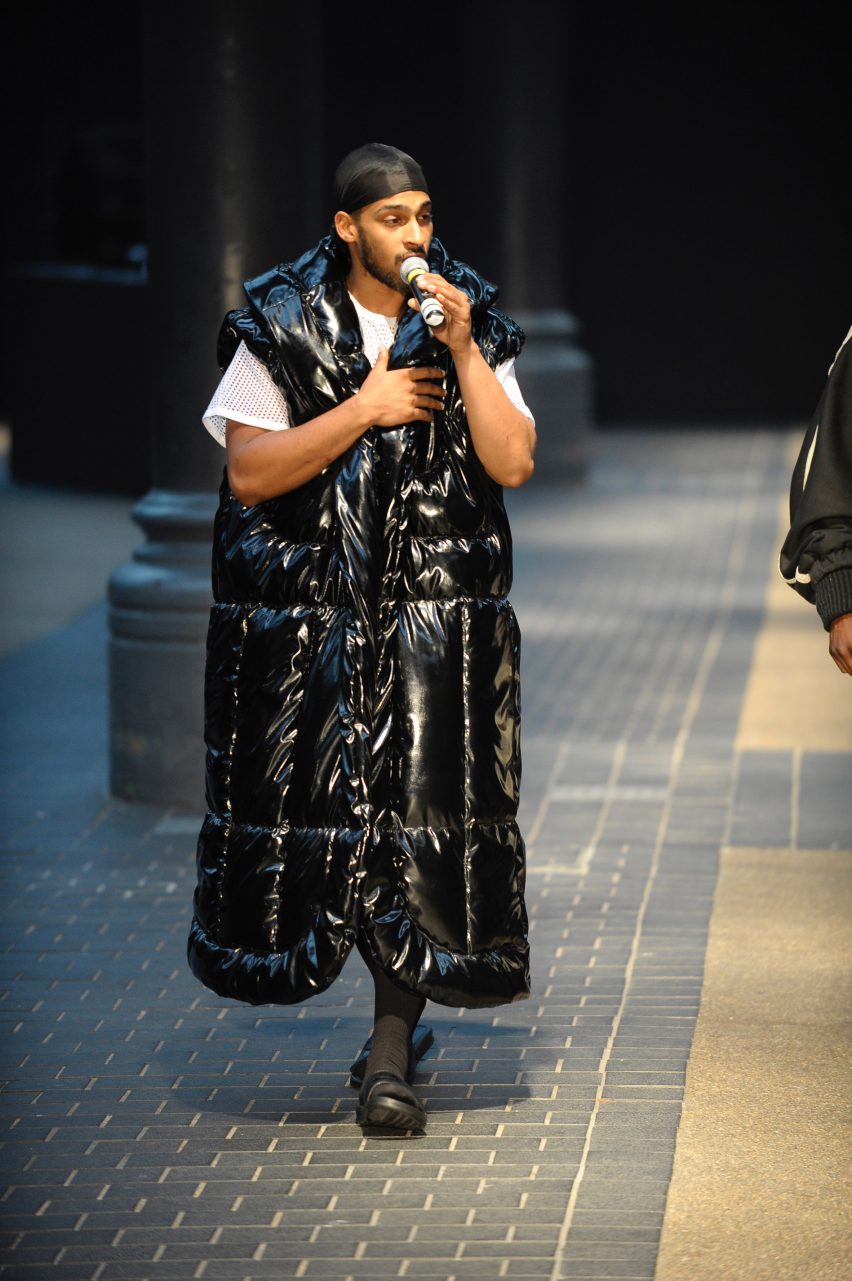
Shanice Palmer
Shanice Palmer's collection – perhaps the strongest of the night – was based on the "mental and physical battles" experienced by young people growing up in London. The performance was an integral part of her presentation, which saw models do spoken-word performances as they walked around the catwalk.
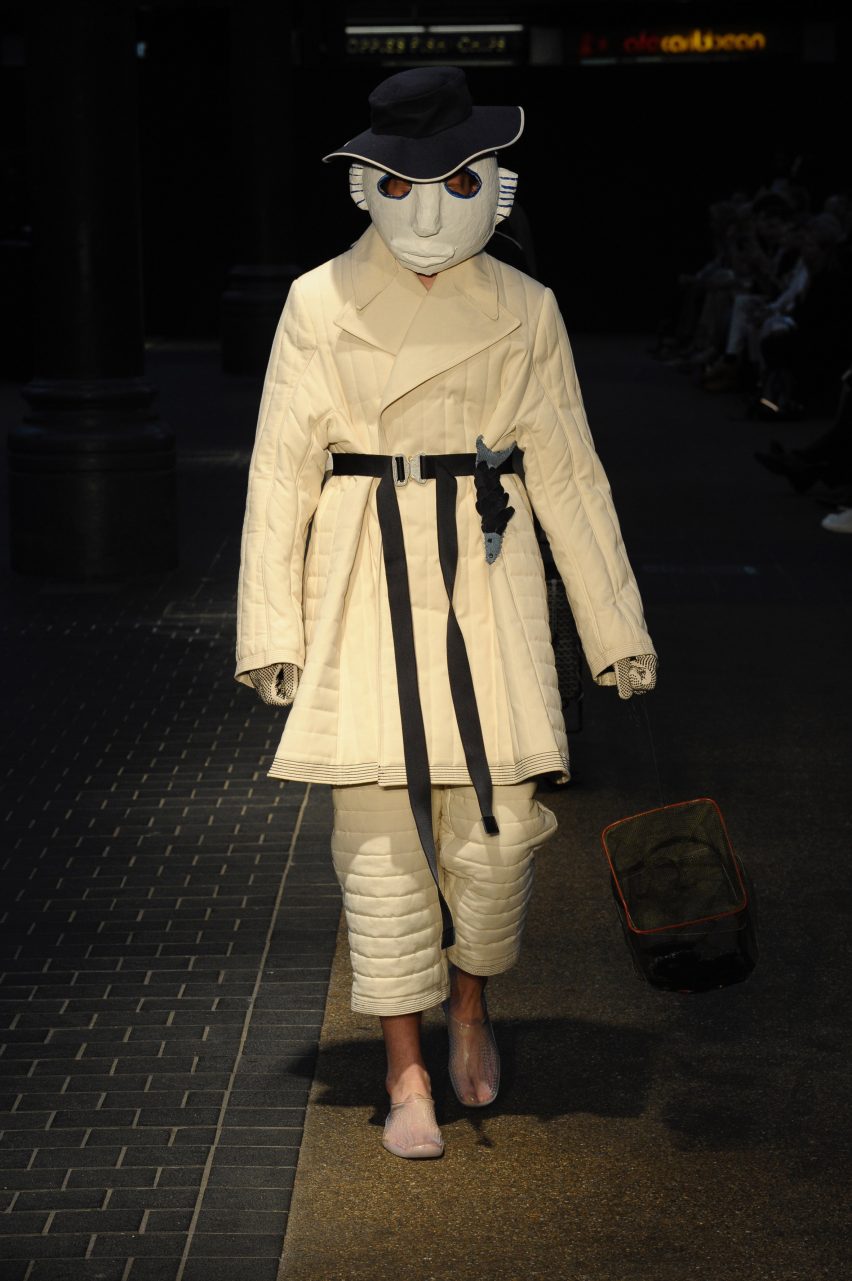
Will Morgan
Will Morgan made most of his collection – which he based on fishermen – from antique and second-hand fabrics, such as French linen tablecloths and 19th-century indigo Japanese futon covers.
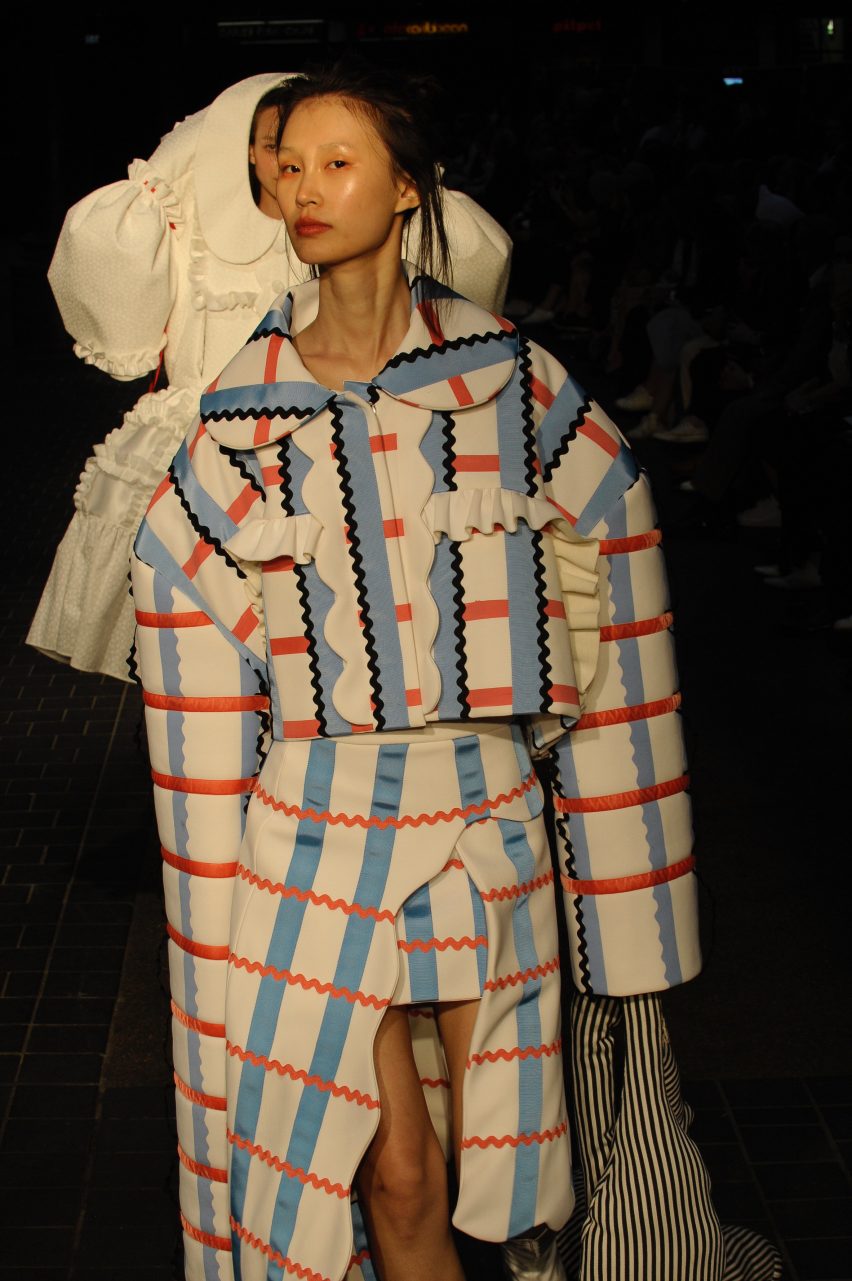
Zhiqing Zhang
In one of the evening's boldest collections, Zhiqing Zhang applied geometric patterns inspired by children's books to oversized interpretations of kids clothing and nightwear.
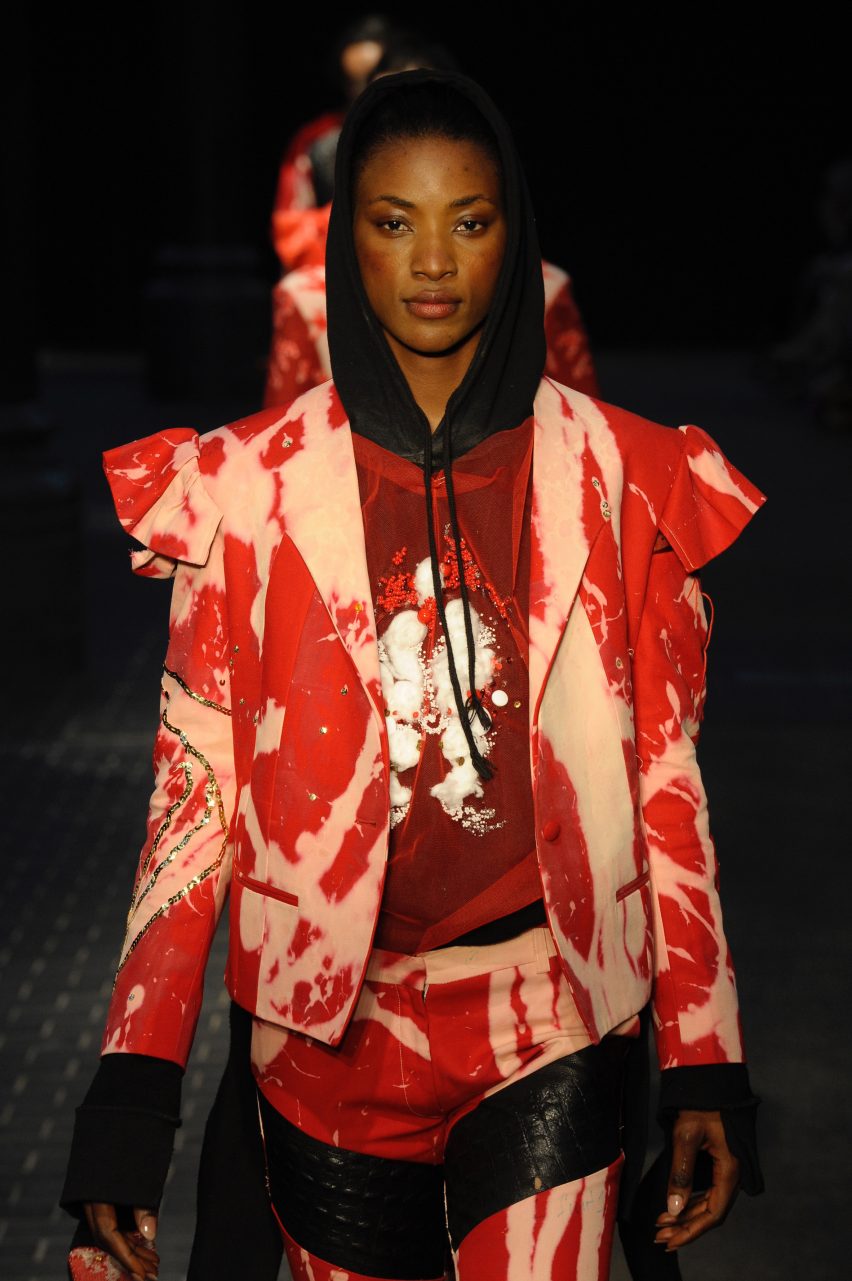
Ali Eckmecki
Young Turkish designer Ali Ekmekci's sportswear collection was inspired by the current mainstream media. Named Fake News, the garments were printed with newspaper covers and logos, with accessories in the form of kettlebell-shaped bags and THAT blue IKEA bag.